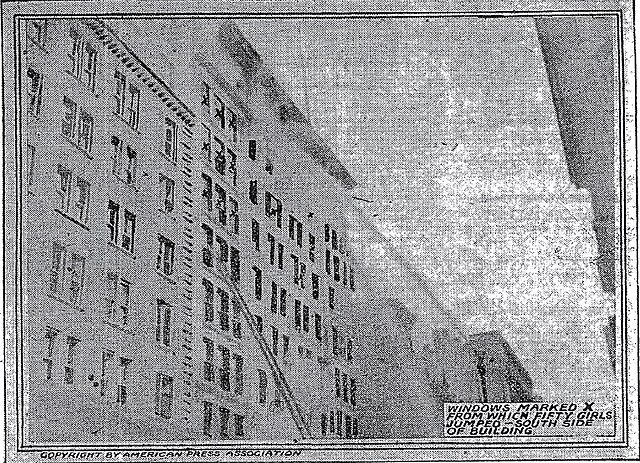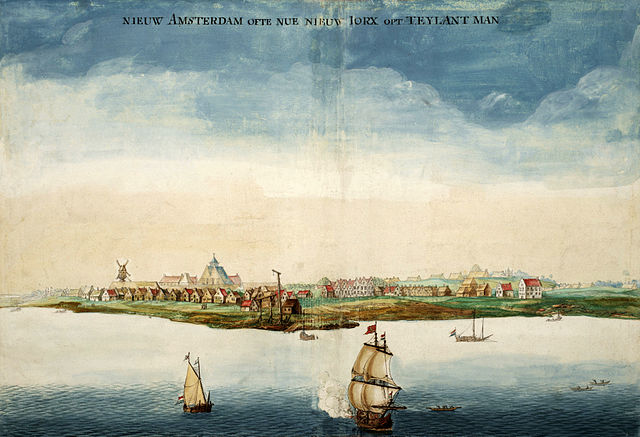Triangle Shirtwaist Factory fire
The Triangle Shirtwaist Factory fire in the Greenwich Village neighborhood of Manhattan, New York City, on Saturday, March 25, 1911, was the deadliest industrial disaster in the history of the city, and one of the deadliest in U.S. history. The fire caused the deaths of 146 garment workers – 123 women and girls and 23 men – who died from the fire, smoke inhalation, falling, or jumping to their deaths. Most of the victims were recent Italian or Jewish immigrant women and girls aged 14 to 23; of the victims whose ages are known, the oldest victim was 43-year-old Providenza Panno, and the youngest were 14-year-olds Kate Leone and Rosaria "Sara" Maltese.
Triangle Shirtwaist Factory fire
A horse-drawn fire engine on the way to the burning factory
The building's south side, with windows marked X from which 50 women jumped
62 people jumped or fell from windows.
Manhattan is the most densely populated and geographically smallest of the five boroughs of New York City. The borough is coextensive with New York County, the smallest county by geographical area in the U.S. state of New York. Located almost entirely on Manhattan Island near the southern tip of the state, Manhattan constitutes the center of the Northeast megalopolis and the urban core of the New York metropolitan area. Manhattan serves as New York City's economic and administrative center and has been described as the cultural, financial, media, and entertainment capital of the world.
Midtown Manhattan, the world's largest central business district, in the foreground, with Lower Manhattan and its Financial District in the background
New Amsterdam, centered in what eventually became Lower Manhattan, in 1664, the year England took control and renamed it New York
Statue of George Washington in front of Federal Hall on Wall Street, where in 1789 he was sworn in as the first U.S. president.
Manhattan's Little Italy on the Lower East Side, c. 1900








